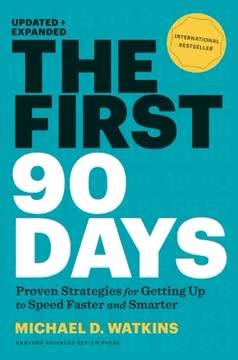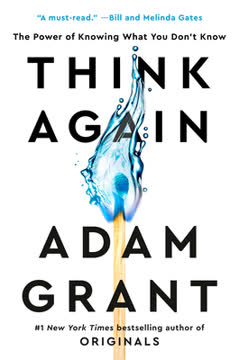つの重要なポイント
1. 広告の二重性:セールスマンシップと誘惑
広告は主に合理的な説得の問題ではなく、視聴者が完全に意識していない方法で機能し、議論や教育、転向よりも強化、促進、魅了、誘惑の方が効果的であるという強力な主張がある。
合理的アピール vs. 感情的アピール。 広告は歴史的にセールスマンシップと誘惑の二つの主要なレンズを通して見られてきた。セールスマンシップモデルは合理的な説得を強調し、製品の利点や論理的な議論に焦点を当てる。一方、誘惑モデルは感情的なアピール、潜在意識への影響、非言語的コミュニケーションの力を認識している。
補完的アプローチ。 これらの二つのアプローチは相互排他的ではなく、しばしば連携して機能する。効果的な広告キャンペーンは、合理的な説得と感情的なアピールの両方の要素を取り入れ、消費者に多層的に響く魅力的なメッセージを作り出すことが多い。
-
セールスマンシップの要素:
- 製品の特徴と利点
- 論理的な議論
- 事実情報
-
誘惑の要素:
- 感情的なアピール
- 視覚的象徴
- 非言語的な手がかり
2. 広告理論の進化:ホプキンスからリーブスへ
広告理論はホプキンスから始まったわけではない。むしろ、彼の過度に単純化された理論とその後の巨大な影響力は、リーブスが40年後に再び行ったように、より興味深い議論を閉ざす効果をもたらした。
初期の影響者たち。 広告理論の進化は、クロード・ホプキンス、ジョン・E・ケネディ、ロッサー・リーブスなどの重要な人物によって形作られた。彼らのアイデアは、現代の広告実践の基礎を築き、「理由なぜ」や「ユニーク・セリング・プロポジション(USP)」といった概念を強調した。
パラダイムのシフト。 広告が進化するにつれて、理論は単に合理的な議論に焦点を当てるだけでなく、心理学的洞察や感情的アピールを取り入れるようになった。この進展は、消費者行動や意思決定プロセスに対する理解の深化を反映している。
- 広告進化の主要な概念:
- 印刷物のセールスマンシップ(ケネディ)
- 科学的広告(ホプキンス)
- ユニーク・セリング・プロポジション(リーブス)
- AIDAモデル(注意、関心、欲求、行動)
3. 広告における潜在意識の影響力
私たちは異なる知覚や経験の間で常に精神的なつながりを作り出しており、そのほとんどは無意識に行われている。
心理学的洞察。 広告における潜在意識の影響の概念は、心理学的理論や研究に大きく依存している。消費者が購入決定やブランドの好みに影響を与える要因に気づいていないことが多いことを認識している。
連想と象徴。 広告主は、ブランドと消費者の間に感情的なつながりを作り出すために、連想や象徴の力を活用する。これらの潜在意識のリンクは、消費者行動を形成する上で合理的な議論よりも影響力があることがある。
- 潜在意識の影響の主要な要素:
- 視覚的象徴
- 感情的連想
- 非言語的手がかり
- 暗黙の記憶と学習
4. ブランドの顕著性と単なる宣伝の重要性
単にブランドを有名にするだけで売上が伸びる。
トップ・オブ・マインド認知。 ブランドの顕著性とは、ブランドがどれだけ消費者に気づかれ、認識され、記憶されるかの程度を指す。研究によれば、ブランドの視認性と親しみやすさを単に高めるだけで、製品の利点を明示的に伝えなくても売上に大きな影響を与えることが示されている。
単純接触効果。 単純接触効果という心理現象は、人々が頻繁に接触するものに対して好意を持つ傾向があることを示唆している。この原則は、一貫した広告と市場でのブランドプレゼンスの価値を強調している。
- ブランドの顕著性に寄与する要因:
- 一貫した広告
- 市場での声のシェア
- 独自のブランド資産(ロゴ、ジングルなど)
- 接触頻度
5. 広告としての社会的つながりと関係構築
このブランドの背景の一部は、保険がまだ主にオランダでブローカーを通じて購入されていた時代に立ち上げられたということです。家族が個人的な関係を持つブローカーです。このキャンペーンが最初から正しく行ってきた重要なことの一つは、直接販売するブランドと同様の友好的な関係を築くことです。
関係構築。 効果的な広告は単に情報を伝えるだけでなく、ブランドと消費者の間に関係を築き、育むことを目指している。このアプローチは、消費者が感情的なつながりや共有された価値観に基づいてブランドを選ぶことが多いことを認識している。
コミュニケーション理論。 特にポール・ワツラウィックの研究に基づくコミュニケーション理論から、広告はブランドと消費者の間の継続的な対話の一形態として理解される。この視点は、ブランドの認識を形成する上でのトーン、コンテキスト、非言語的要素の重要性を強調している。
- 広告における関係構築の主要な側面:
- 一貫したブランドボイスとパーソナリティ
- 感情的なエンゲージメント
- 双方向のコミュニケーション(特にデジタルチャネルで)
- 共有された経験と価値の創造
6. 現実を形作る上での広報の役割
バーネイズは自分を真実を偽装する者とは見なしていなかった。彼は自分を真実を形作る者と見なしていた。
物語のフレーミング。 広告と密接に関連する広報は、公共の認識を形作り、共有された現実を構築する上で重要な役割を果たす。エドワード・バーネイズのような広報の実践者は、問題や出来事をフレーミングして世論に影響を与える力を理解していた。
間接的な影響。 直接的な広告とは異なり、広報はしばしば舞台裏でニュースイベントを作り出し、物語を形作り、意見リーダーに影響を与える。このアプローチはより微妙であり、長期的な認識を形作る上でより効果的である可能性がある。
- 現実を形作るための広報戦略:
- ニュース価値のあるイベントの作成
- 意見リーダーへの影響
- 問題や議論のフレーミング
- 危機管理コミュニケーション
7. 広告の見過ごされがちな芸術:ハンバグとショーマンシップ
そして、このハンバグの原則は、広告の世界で最も成功したものの多くに驚くほどよく適合している。
スペクタクルの力。 P.T.バーナムのようなショーマンからインスピレーションを得て、広告における「ハンバグ」の概念は、スペクタクル、注目を集める戦術、創造的なフレアの重要性を強調している。このアプローチは、時には最も効果的な広告が観客を楽しませ、魅了するものであることを認識している。
バランスの取れたアプローチ。 現代の広告はしばしば尊敬と科学的妥当性を追求するが、ショーマンシップとハンバグの原則は依然として関連性がある。成功したキャンペーンは、事実情報と創造的で注目を集める要素のバランスを取ることが多い。
- 広告におけるハンバグとショーマンシップの要素:
- 大胆で注目を集める戦術
- 創造的なストーリーテリング
- 予想外または物議を醸すアプローチ
- 記憶に残るスペクタクルやイベント
最終更新日:
FAQ
What's "The Anatomy of Humbug" about?
- Exploration of Advertising Theories: "The Anatomy of Humbug" by Paul Feldwick explores various theories and models of advertising, challenging the conventional wisdom about how advertising works.
- Historical Perspective: The book delves into the history of advertising thought, examining how past beliefs and practices continue to influence current advertising strategies.
- Critical Analysis: Feldwick critically analyzes the assumptions and narratives that have shaped the advertising industry, such as the Enlightenment, Golden Age, and Year Zero narratives.
- Practical Implications: The book aims to provide practical insights by understanding the historical roots of advertising assumptions, encouraging readers to think differently about advertising.
Why should I read "The Anatomy of Humbug"?
- Broaden Understanding: It offers a comprehensive overview of advertising theories, helping readers understand the complexity and diversity of advertising practices.
- Challenge Assumptions: The book encourages readers to question and critically assess the commonly held beliefs about how advertising works.
- Practical Insights: By exploring historical and contemporary advertising practices, the book provides valuable insights that can be applied to modern advertising challenges.
- Engaging Narrative: Feldwick's engaging writing style and use of historical anecdotes make the book both informative and enjoyable to read.
What are the key takeaways of "The Anatomy of Humbug"?
- Multiple Theories: Advertising is not governed by a single theory; multiple models like salesmanship, seduction, and showmanship coexist and offer different perspectives.
- Historical Influence: The past narratives and practices in advertising continue to shape current beliefs and strategies, often unconsciously.
- Critical Thinking: Understanding the historical context of advertising theories can free practitioners from being slaves to outdated assumptions.
- Diverse Approaches: Effective advertising can be achieved through various approaches, including rational persuasion, emotional appeal, and creating brand salience.
What are the best quotes from "The Anatomy of Humbug" and what do they mean?
- "Ideas we have, and do not know we have, have us." This quote emphasizes the unconscious influence of ingrained ideas and assumptions on our thinking and actions.
- "Advertising is the art of getting a unique selling proposition into the heads of the most people at the lowest possible cost." This reflects Rosser Reeves's belief in the power of a single, memorable message in advertising.
- "The role of advertising is not so much to increase sales, as to increase saleability." This suggests that advertising's primary function is to enhance a brand's attractiveness and desirability, rather than directly driving sales.
- "Persuasion isn’t a science, it’s an art." Bill Bernbach's quote highlights the creative and intuitive aspects of advertising, challenging the notion that it can be reduced to a set of scientific rules.
How does Paul Feldwick define "Humbug" in advertising?
- Showmanship and Spectacle: Feldwick draws on P.T. Barnum's concept of "humbug," which involves using showmanship and spectacle to attract attention and engage audiences.
- Beyond Deception: Humbug is not about deceit but about creating a compelling and entertaining experience that captures public interest.
- Value in Entertainment: The idea is that advertising, like humbug, should provide value through entertainment and engagement, rather than just factual persuasion.
- Relevance to Advertising: Feldwick suggests that successful advertising often involves elements of humbug, using creativity and flair to make brands memorable.
What are the main advertising narratives discussed in "The Anatomy of Humbug"?
- The Enlightenment Narrative: This narrative suggests that advertising has evolved from primitive practices to a more scientific and rational approach.
- The Golden Age Narrative: It romanticizes a past era of advertising as a time of creativity and effectiveness, often seen as superior to current practices.
- The Year Zero Narrative: This perspective argues that the world has changed so much that past advertising practices are now irrelevant.
- Critique of Narratives: Feldwick critiques these narratives, showing how they oversimplify the history and complexity of advertising.
How does "The Anatomy of Humbug" challenge the concept of the Unique Selling Proposition (USP)?
- Reeves's Influence: The book examines Rosser Reeves's concept of the USP, which emphasizes a single, memorable message in advertising.
- Questioning Effectiveness: Feldwick questions the effectiveness of the USP, suggesting that it oversimplifies how advertising works.
- Diverse Approaches: He argues that successful advertising often involves multiple messages and emotional appeals, not just a single proposition.
- Historical Context: The book places the USP within the broader historical context of advertising theories, showing its limitations.
What role does "seduction" play in advertising according to "The Anatomy of Humbug"?
- Emotional Appeal: Seduction in advertising involves appealing to emotions and subconscious desires rather than just rational arguments.
- Historical Roots: The book traces the history of seduction in advertising, highlighting figures like Ernest Dichter who emphasized psychological motivations.
- Modern Relevance: Feldwick discusses how modern advertising continues to use seduction through imagery, symbolism, and emotional storytelling.
- Complement to Persuasion: Seduction is presented as a complement to rational persuasion, offering a different but equally important approach to influencing consumers.
How does "The Anatomy of Humbug" address the concept of "salience" in advertising?
- Brand Visibility: Salience refers to the prominence and visibility of a brand in consumers' minds, making it more likely to be chosen.
- Ehrenberg-Bass Institute: The book discusses the work of the Ehrenberg-Bass Institute, which emphasizes the importance of brand salience over differentiation.
- Fame and Publicity: Feldwick highlights the role of advertising in creating brand fame and maintaining top-of-mind awareness.
- Practical Implications: The concept of salience challenges traditional views of advertising, suggesting that being memorable and ubiquitous can be more effective than detailed persuasion.
What is the significance of "relationship" in advertising as discussed in "The Anatomy of Humbug"?
- Beyond Transactions: Advertising is not just about transactions but about building and maintaining relationships between brands and consumers.
- Watzlawick's Influence: Feldwick draws on Paul Watzlawick's communication theory, emphasizing the relational aspects of advertising.
- Analogic Communication: The book highlights the importance of non-verbal, analogic communication in shaping consumer-brand relationships.
- Long-term Engagement: Building a strong relationship with consumers can lead to long-term brand loyalty and engagement.
How does "The Anatomy of Humbug" view the role of public relations in advertising?
- Shared Reality: Advertising and public relations both play a role in constructing a shared reality and shaping public perceptions.
- Edward Bernays's Influence: The book discusses Edward Bernays's contributions to PR, emphasizing the power of storytelling and framing.
- Invisible Influence: PR often works behind the scenes, influencing public opinion without overt persuasion, a concept applicable to advertising.
- Complementary Roles: Advertising and PR are seen as complementary, with advertising providing visibility and PR shaping the narrative.
How does "The Anatomy of Humbug" relate advertising to showmanship?
- P.T. Barnum's Legacy: Feldwick draws parallels between advertising and P.T. Barnum's showmanship, emphasizing entertainment and spectacle.
- Humbug as Strategy: Showmanship involves using creativity and flair to capture attention and engage audiences, akin to Barnum's "humbug."
- Beyond Science and Art: Advertising is positioned as a blend of science, art, and showmanship, using various elements to create impact.
- Practical Application: The book suggests that embracing showmanship can lead to more memorable and effective advertising campaigns.
レビュー
『The Anatomy of Humbug』は、広告理論の洞察に満ちた歴史として広く称賛されている。読者は、フェルドウィックの販売術から誘惑までのさまざまな思想流派に対する批判的な分析を高く評価している。この本は業界の前提を問い直し、現代の議論に対する歴史的な文脈を提供している。多くの人々が広告業界の専門家にとって必読書と考えており、さまざまなアプローチに対するバランスの取れた視点を提供している。一部の読者は実践的なアドバイスや具体例の欠如を指摘しているが、ほとんどの人はこの本の思考を刺激する内容と明快な文体を評価している。総じて、広告の過去と現在を新鮮かつ啓発的に検証したものと見なされている。
Similar Books














